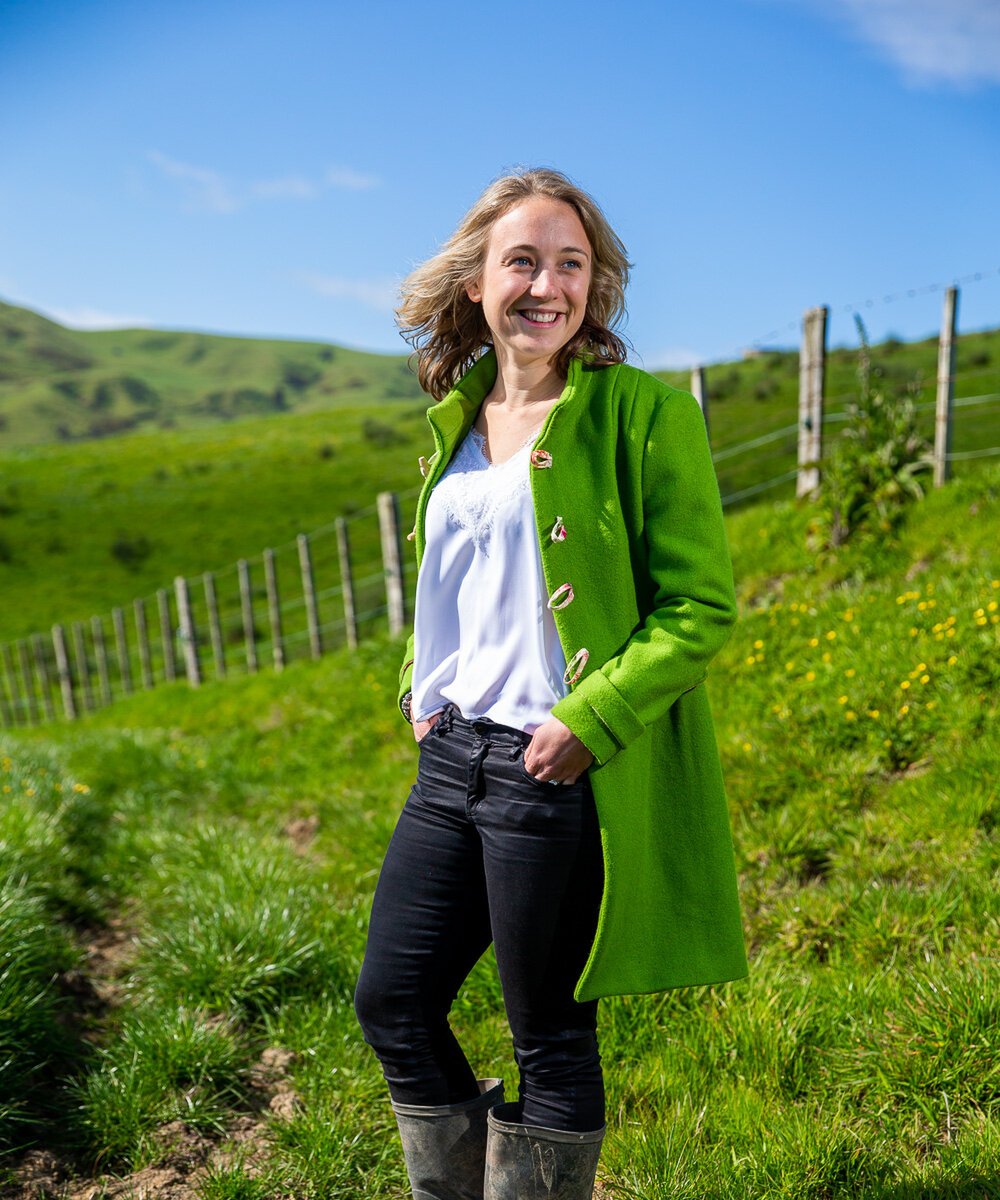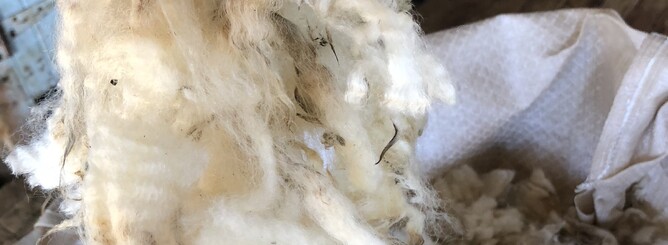It was not so long ago that a new blanket, piece of furniture or clothing was an item to to be cherished for a lifetime, yet in these days of abject consumerism, these products are tossed aside far too easily. We know as a society we are starting to buck this trend, and at Velma & Beverley, we are very proud of the lengths we've gone to make your coat 100% New Zealand sourced.
Like our wool fabric partner Inter-Weave, we want to support locals. The farmers across our entire country deserve to make money out of this beautiful product their sheep produce, and unlike most wool fabrics (even those available in our sewing stores), where wool is sent offshore to China and mixed with inferior wools or fibres of unknown origin, our wool fabric is 100% New Zealand grown, scoured, spun, woven and sewn. We believe we're the only company in New Zealand providing this type of apparel product to our customers, and we're incredibly proud of this.
Here's what Inter-Weave have got to say about our beautiful wool fabric;
Everything in our world is inter-related....Inter-woven. This is why we love wool. Its timeless beauty and grace is sourced from some of the most picturesque places on our planet. It lives and breathes like the animal that grows it. Wool is biodegradable, unlike man made fibres. It does not use excessive quantities of water and pesticides like cotton, is a local resource and is sustainable.
We are proud that Inter-weave products are made of wool, grown in NZ, spun in NZ by Woolyarns in Lower Hutt and woven here at Inter-weave. It's right on our doorstep, so please take the time to appreciate its natural, classic beauty.
So, why wool?
It's natural...
Wool is a protein fibre formed in the skin of sheep, and is thus one hundred percent natural, not man-made. Since the Stone Age, it has been appreciated as one of the most effective forms of all-weather protection known to man, and science is yet to produce a fibre which matches its unique properties.
It's renewable...
As long as there is grass to graze on, every year sheep will produce a new fleece; making wool a renewable fibre source. Woolgrowers actively work to safeguard the environment and improve efficiency, endeavouring to make the wool industry sustainable for future generations.
It's biodegradeable...
At the end of its useful life, wool can be returned to the soil, where it decomposes, releasing valuable nutrients into the ground. When a natural wool fibre is disposed of in soil, it takes a very short time to break down, whereas most synthetics are extremely slow to degrade.
It's a natural insulator...
Wool is a hygroscopic fibre. As the humidity of the surrounding air rises and falls, the fibre absorbs and releases water vapour. Heat is generated and retained during the absorption phase, which makes wool a natural insulator. Used in the home, wool insulation helps to reduce energy costs and prevents the loss of energy to the external environment,
thus reducing carbon emissions.
It's breathable...
Wool fibres are crimped, and when tightly packed together, form millions of tiny pockets of air. This unique structure allows it to absorb and release moisture—either in the atmosphere or perspiration from the wearer—without compromising its thermal efficiency. Wool has a large capacity to absorb moisture vapour (up to 30 per cent of its own weight) next to the skin, making it extremely breathable.
It's resilient and elastic...
Wool fibres resist tearing and are able to be bent back on themselves over 20,000 times without breaking. Due to its crimped structure, wool is also naturally elastic, and so wool garments have the ability to stretch comfortably with the wearer, but are then able to return to their natural shape, making them resistant to wrinkling and sagging. Wool therefore maintains its appearance in the longer term, adding value to the product and its lifespan. Wool is also hydrophillic—it is highly absorbent, and retains liquids—and so dyes richly while remaining colourfast, without the use of chemicals.
it's multi-climatic and trans-seasonal...
Thanks to its hygroscopic abilities, wool constantly reacts to changes in body temperature, maintaining its wearer’s thermophysical comfort in both cold and warm weather.
It's stain and odour-resistant and easy-care...
The protective waxy coating on wool fibres makes wool products resistant to staining and they also pick up less dust as wool is naturally anti-static. Recent innovations mean wool items are no longer hand-wash only. Many wool products can now be machine-washed and tumble dried. Wool is far more efficient than other textiles at absorbing sweat and releasing it into the air, before bacteria has a chance to develop and produce unpleasant body odour.
It's a safe solution...
Wool is naturally safe. It is not known to cause allergies and does not promote the growth of bacteria. It can even reduce floating dust in the atmosphere, as the fibre’s microscopic scales are able to trap and hold dust in the top layers until vacuumed away. Thanks to its high water and nitrogen content, wool is naturally flame-retardant, and has a far higher ignition threshold than many other fibres, will not melt and stick to the skin causing burns, and produces less noxious fumes that cause death in fire situations. Finally, wool also has a naturally high level of UV protection, which is much higher than most synthetics and cotton.
Of course, the amazing properties of wool (and in particular, our pure New Zealand wool fabric), means that it lasts for a long time and therefore it's value is slightly higher at purchase because quality takes longer and is slightly more costly to produce.
Please support us, our supply chain and ultimately our farmers and New Zealand businesses to continue to thrive - and understand that wool means quality, a raft of amazing properties, and sustainability.





